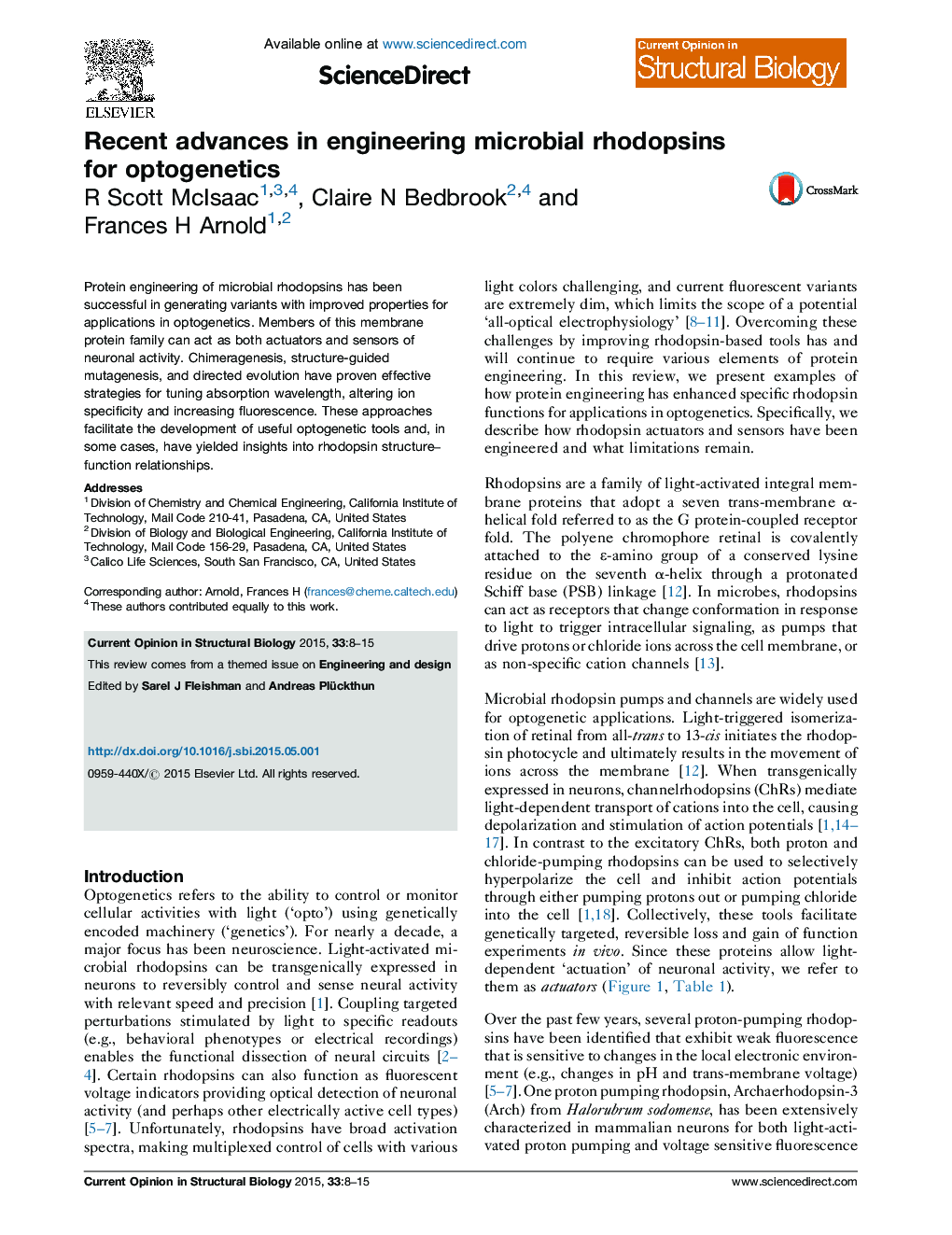| Article ID | Journal | Published Year | Pages | File Type |
|---|---|---|---|---|
| 8319878 | Current Opinion in Structural Biology | 2015 | 8 Pages |
Abstract
Protein engineering of microbial rhodopsins has been successful in generating variants with improved properties for applications in optogenetics. Members of this membrane protein family can act as both actuators and sensors of neuronal activity. Chimeragenesis, structure-guided mutagenesis, and directed evolution have proven effective strategies for tuning absorption wavelength, altering ion specificity and increasing fluorescence. These approaches facilitate the development of useful optogenetic tools and, in some cases, have yielded insights into rhodopsin structure-function relationships.
Related Topics
Life Sciences
Biochemistry, Genetics and Molecular Biology
Biochemistry
Authors
R Scott McIsaac, Claire N Bedbrook, Frances H Arnold,
